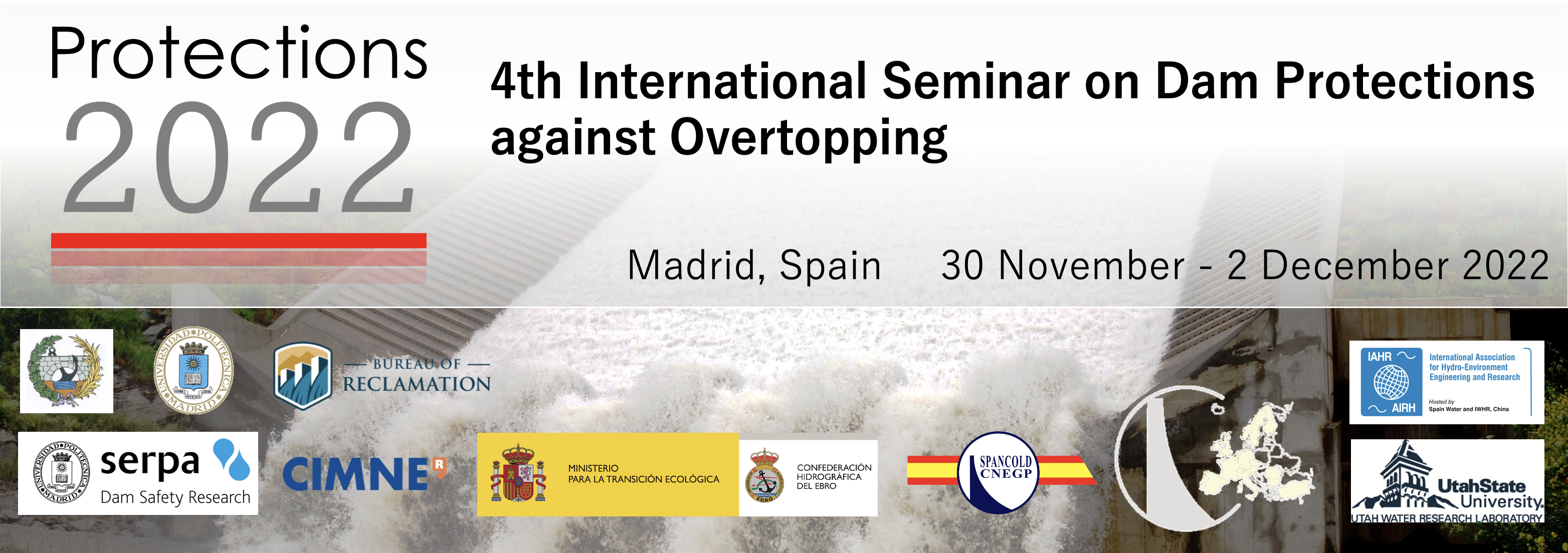Session
Session 1
Start Date
11-30-2022 11:35 AM
Description
The submerged jet erosion test (JET) is one of several methods available for quantifying erodibility of cohesive soils, a crucial input for modeling erosion and breach of embankment dams with models such as WinDAM, EMBREA (Morris 2011), and DL BREACH (Wu 2013; 2016a; 2016b). The JET was initially developed in the late 1980s as a relatively large-scale device with a 13-mm diameter nozzle creating an impinging jet that erodes a soil sample submerged in a 61-cm diameter tank. This first device was documented in an ASTM standard (D5852-1995), but the standard was withdrawn in 2016. In the last 15 to 20 years, smaller scale devices have become common, including one described as the “original JET” (6.4-mm nozzle operating within a 30.5-cm tank) (Hanson and Cook 2004) and the newer “mini-JET” (3 mm nozzle and 10-cm tank) (Al-Madhhachi et al. 2013b). New methods for analyzing the scour-vs.-time data obtained from the JET have also been proposed, some (Daly et al. 2013) based on the traditional linear excess stress equation describing the soil etachment process, and others (Al-Madhhachi et al. 2013a) based on nonlinear soil erosion models such as the mechanistic Wilson model (Wilson 1993a, 1993b). This paper provides an overview of JET history and development and then summarizes a recent study (Wahl 2021) comparing JET data analysis methods. Fifty-two JET experiments on four different soil types (lean clay, silty clay, clayey sand, and silty sand) were analyzed by nine different methods. The results give indications of the practical value of linear vs. nonlinear soil erosion models and the effectiveness of different curve-fitting methods for estimating erodibility parameters. Suggestions for the use of the JET in dam breach modeling are offered.
Creative Commons License

This work is licensed under a Creative Commons Attribution-Noncommercial-No Derivative Works 4.0 License.
Included in
Applying the Submerged Jet Erosion Test to Embankment Dam Breach Modeling
The submerged jet erosion test (JET) is one of several methods available for quantifying erodibility of cohesive soils, a crucial input for modeling erosion and breach of embankment dams with models such as WinDAM, EMBREA (Morris 2011), and DL BREACH (Wu 2013; 2016a; 2016b). The JET was initially developed in the late 1980s as a relatively large-scale device with a 13-mm diameter nozzle creating an impinging jet that erodes a soil sample submerged in a 61-cm diameter tank. This first device was documented in an ASTM standard (D5852-1995), but the standard was withdrawn in 2016. In the last 15 to 20 years, smaller scale devices have become common, including one described as the “original JET” (6.4-mm nozzle operating within a 30.5-cm tank) (Hanson and Cook 2004) and the newer “mini-JET” (3 mm nozzle and 10-cm tank) (Al-Madhhachi et al. 2013b). New methods for analyzing the scour-vs.-time data obtained from the JET have also been proposed, some (Daly et al. 2013) based on the traditional linear excess stress equation describing the soil etachment process, and others (Al-Madhhachi et al. 2013a) based on nonlinear soil erosion models such as the mechanistic Wilson model (Wilson 1993a, 1993b). This paper provides an overview of JET history and development and then summarizes a recent study (Wahl 2021) comparing JET data analysis methods. Fifty-two JET experiments on four different soil types (lean clay, silty clay, clayey sand, and silty sand) were analyzed by nine different methods. The results give indications of the practical value of linear vs. nonlinear soil erosion models and the effectiveness of different curve-fitting methods for estimating erodibility parameters. Suggestions for the use of the JET in dam breach modeling are offered.


